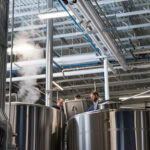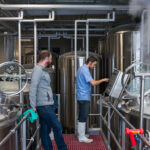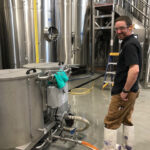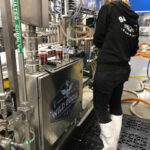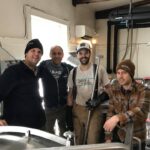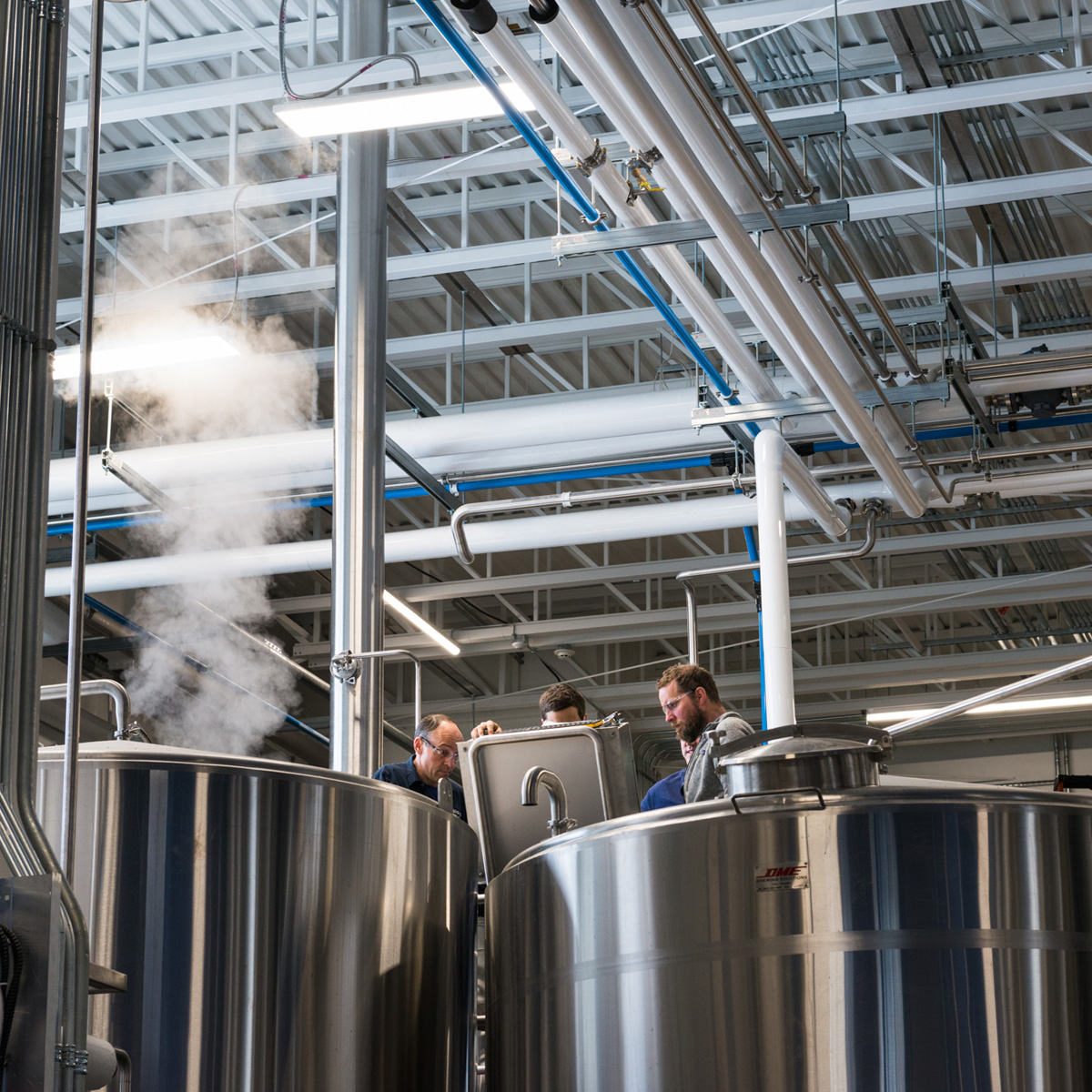
#SebagoBrewTurns20 – Part 3: Innovation
Since Sebago Brewing brewed its first batches of beer in their South Portland brewpub, the company has tried new things, through innovation and always adapting to a market that has changed dramatically and grown exponentially.
Now, after dozens of seasonal beers, small batches, and beers that have stood the test of time, Sebago co-founder and vice president Kai Adams says that “the single most important thing that happened to innovation at Sebago is me letting go of recipe design and formulation.”
Of course Kai still keeps a close eye on quality and the process of licensing, naming, and packaging, but he believes that letting the brewers have more freedom has made Sebago beers better: “We have such a talented crew that’s keeping up on the latest techniques and ingredients, that it made sense to let go and let them do what they do best.”
Rusty Packer has been a brewer at Sebago for six years. His approach to innovation is simple: he thinks about what he wants to drink and what techniques are out there that he hasn’t tried. For Rusty, experimenting with new things is the name of the game. Simmer Down, for example, was an exercise in dry hopping during primary fermentation. Now it’s a summer staple.
For brewer Jon Clegg, innovation often grows out of necessity. Jon’s been brewing at Sebago for more than 19 years, and he’s done his share of innovating, including on the equipment side: “You can’t always have everything you want with existing equipment, so you might have to take something and modify it to make it do what you want it to.”
Jon gives as an example washing the casks in the brewery. They made up a station to clean the casks thoroughly, but they had to modify a piece of equipment that was originally designed to clean fermentation vessels. It doesn’t sound like much, but when you have a lot of casks to clean by hand, that modification is a big deal. Jon says the hard part of modifying equipment to serve another purpose is that, at the end of the day, the original equipment still needs to do what it’s made for.
The new brewery is definitely bigger than the old Gorham facility, and the goal is to make the product – and production – better. The new facility includes controls and instrumentation that allow much greater control of the brewing process; the new tools continue the quality evolution of the beers. Rusty thinks that even something as simple as having hot water to spray the brewery cellar can make a difference!
One thing that all the brewers are excited about is the 7-barrel mash tun and 5-barrel kettle pilot system. In the past two months, on top of producing the core beers, they’ve crafted six different beers on the pilot system. Spring Cleaning is a double dry hopped IPA that came out of the annual malt storage cleanup. Dieter Redux (brewer Stu Brydon’s first pilot batch at the new brewery) is Sebago’s first experiment on the classic Dunkel Weiss, or dark wheat, style. Brewer Kevin Depot had the idea for Saison, Saisoff, a traditional French yeast Saison but with a hoppier twist.
For the Sebago crew, innovation also means collaborating with other brewers. Humlevenner (“hoppy friends” in Norwegian), was a collab with Norway Brewing Company earlier this year.
Rusty is really excited about a new pilot batch – one that’s so new he hasn’t even emptied the barrels yet. And that’s the only hint you’ll get. You’ll have to come to our 20th anniversary party on June 16 to try it.
We’ll let Jon have the last word on innovation: “It’s getting better at what we do. Taking something and learning from it and developing that craft or that skill. It’s amazing what you can learn when you’re surrounded by like-minded people.”
Read our final #SebagoBrewTurns20 post here.
